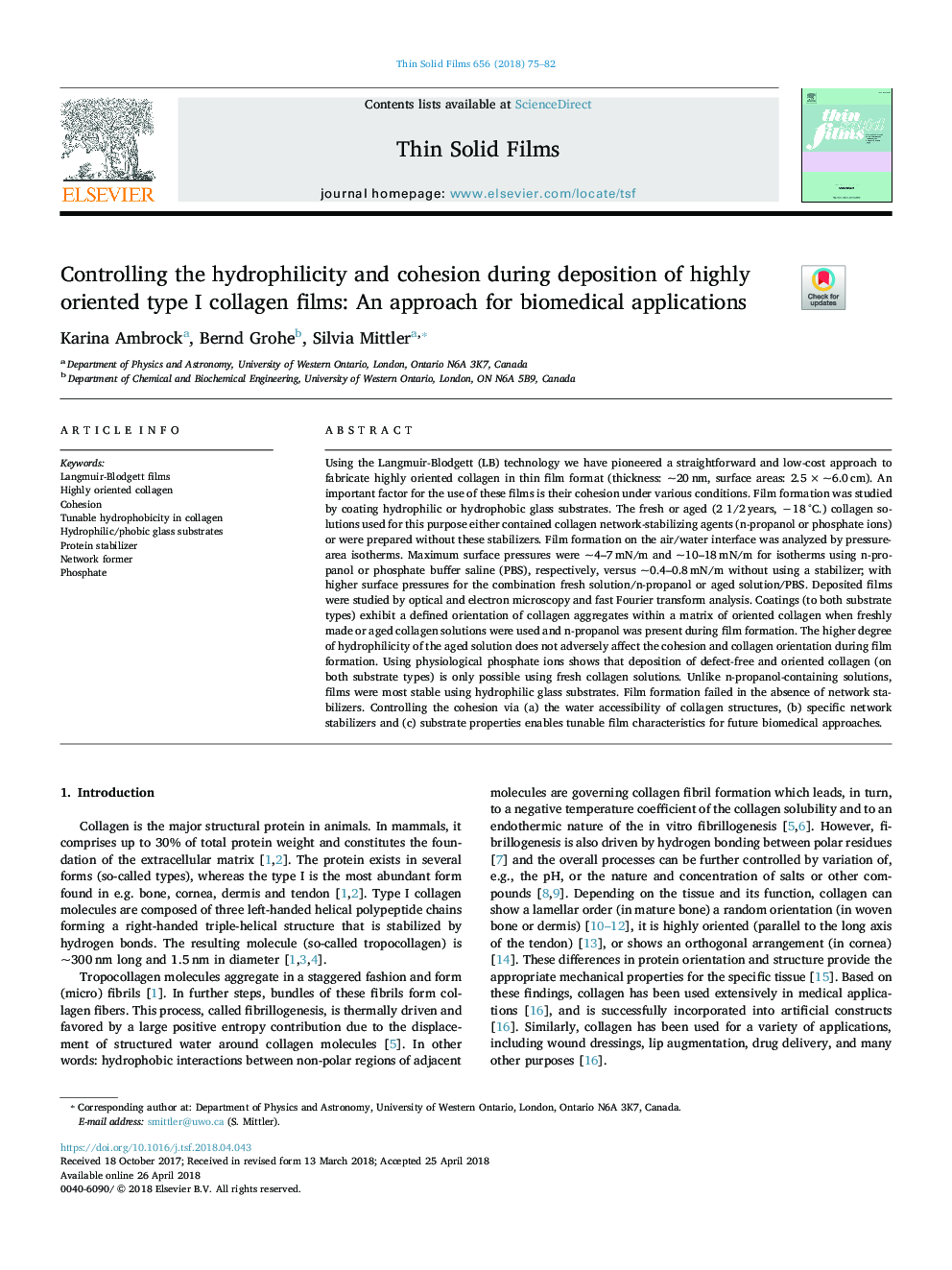| کد مقاله | کد نشریه | سال انتشار | مقاله انگلیسی | نسخه تمام متن |
|---|---|---|---|---|
| 8032629 | 1517956 | 2018 | 8 صفحه PDF | دانلود رایگان |
عنوان انگلیسی مقاله ISI
Controlling the hydrophilicity and cohesion during deposition of highly oriented type I collagen films: An approach for biomedical applications
دانلود مقاله + سفارش ترجمه
دانلود مقاله ISI انگلیسی
رایگان برای ایرانیان
کلمات کلیدی
موضوعات مرتبط
مهندسی و علوم پایه
مهندسی مواد
فناوری نانو (نانو تکنولوژی)
پیش نمایش صفحه اول مقاله

چکیده انگلیسی
Using the Langmuir-Blodgett (LB) technology we have pioneered a straightforward and low-cost approach to fabricate highly oriented collagen in thin film format (thickness: ~20â¯nm, surface areas: 2.5â¯Ãâ¯~6.0â¯cm). An important factor for the use of these films is their cohesion under various conditions. Film formation was studied by coating hydrophilic or hydrophobic glass substrates. The fresh or aged (2 1/2â¯years, â18â¯Â°C.) collagen solutions used for this purpose either contained collagen network-stabilizing agents (n-propanol or phosphate ions) or were prepared without these stabilizers. Film formation on the air/water interface was analyzed by pressure-area isotherms. Maximum surface pressures were ~4-7â¯mN/m and ~10-18â¯mN/m for isotherms using n-propanol or phosphate buffer saline (PBS), respectively, versus ~0.4-0.8â¯mN/m without using a stabilizer; with higher surface pressures for the combination fresh solution/n-propanol or aged solution/PBS. Deposited films were studied by optical and electron microscopy and fast Fourier transform analysis. Coatings (to both substrate types) exhibit a defined orientation of collagen aggregates within a matrix of oriented collagen when freshly made or aged collagen solutions were used and n-propanol was present during film formation. The higher degree of hydrophilicity of the aged solution does not adversely affect the cohesion and collagen orientation during film formation. Using physiological phosphate ions shows that deposition of defect-free and oriented collagen (on both substrate types) is only possible using fresh collagen solutions. Unlike n-propanol-containing solutions, films were most stable using hydrophilic glass substrates. Film formation failed in the absence of network stabilizers. Controlling the cohesion via (a) the water accessibility of collagen structures, (b) specific network stabilizers and (c) substrate properties enables tunable film characteristics for future biomedical approaches.
ناشر
Database: Elsevier - ScienceDirect (ساینس دایرکت)
Journal: Thin Solid Films - Volume 656, 30 June 2018, Pages 75-82
Journal: Thin Solid Films - Volume 656, 30 June 2018, Pages 75-82
نویسندگان
Karina Ambrock, Bernd Grohe, Silvia Mittler,